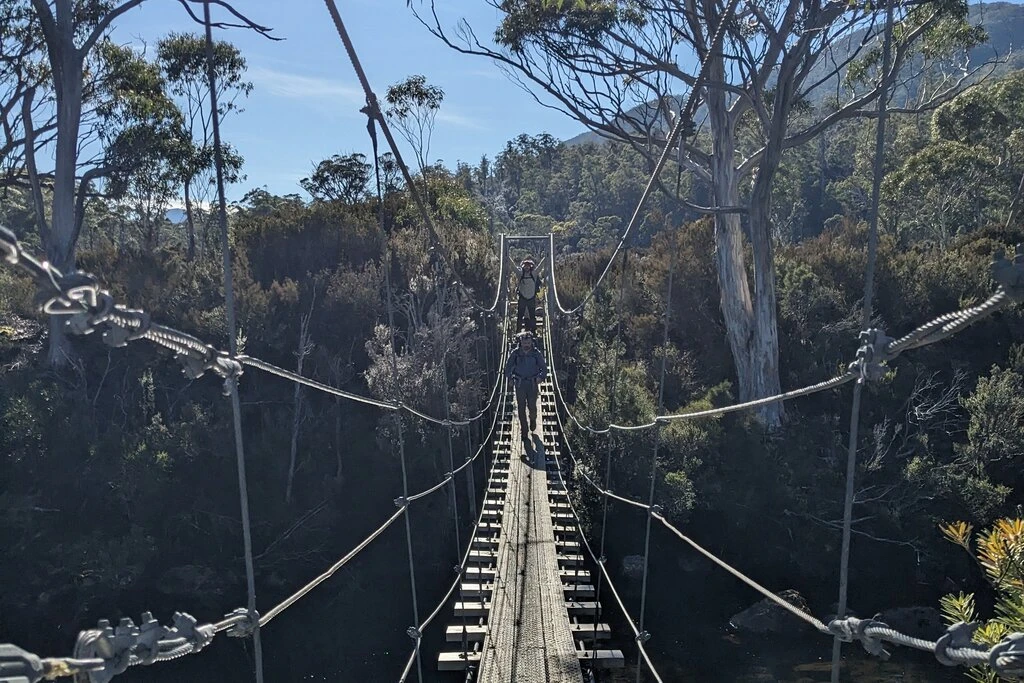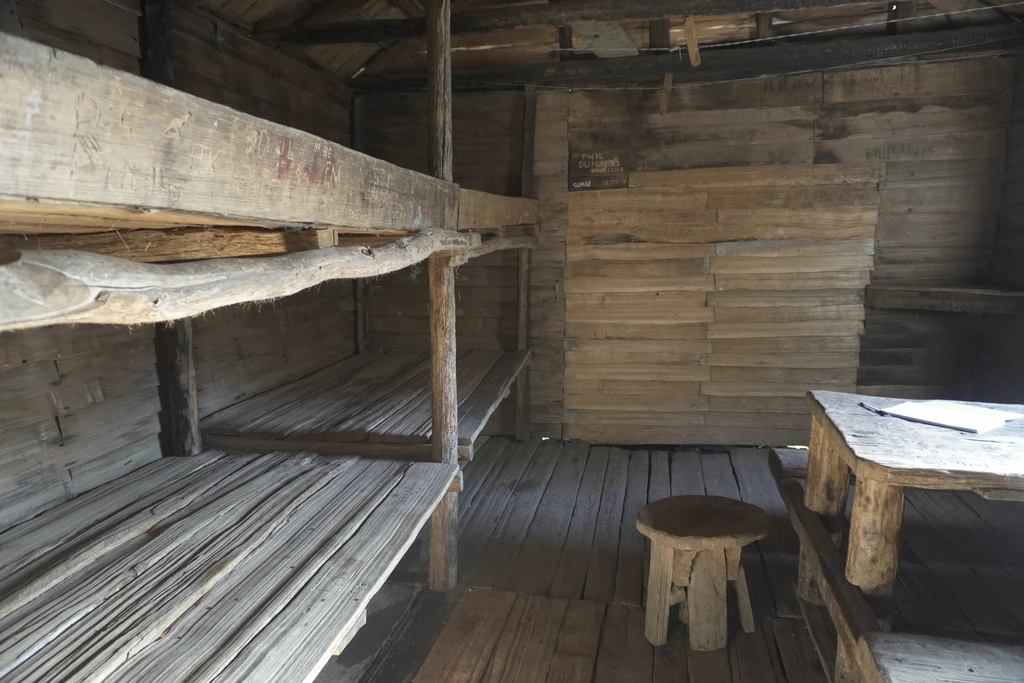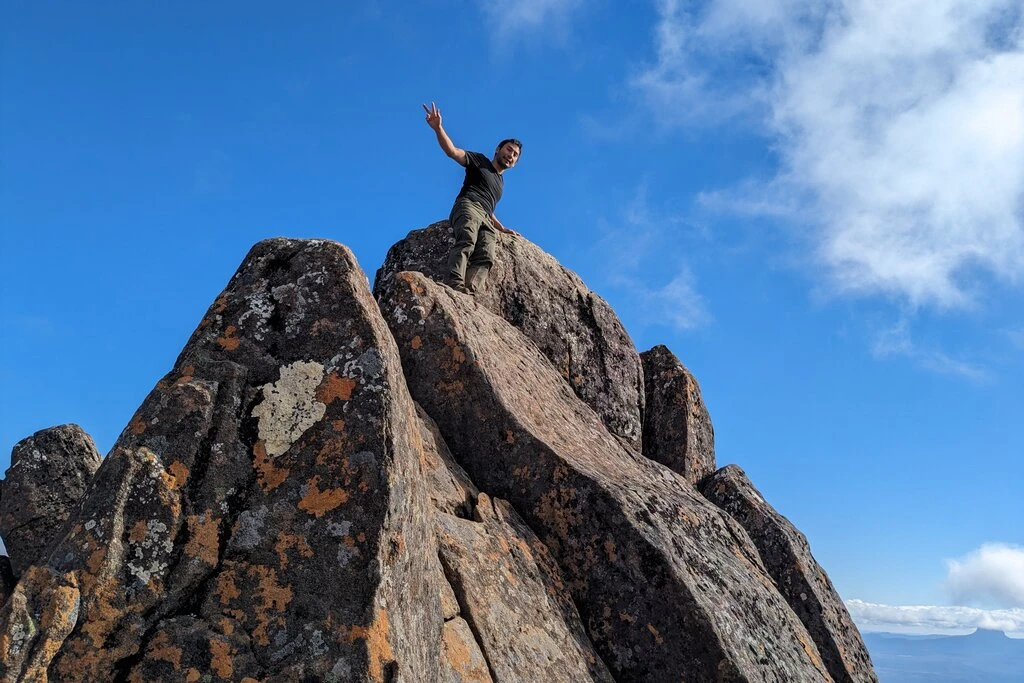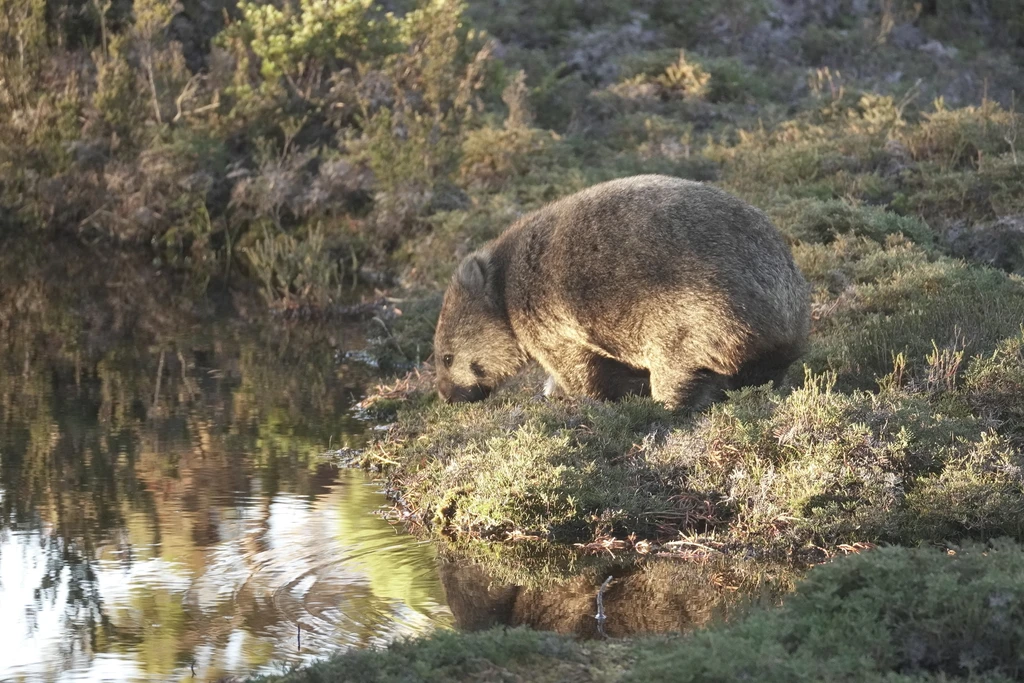Links to other parts of this trip report:
- Part 1: Australia versus New Zealand
- Part 2: Before the walk [Melbourne photos, Hobart, Launceston]
- Part 3: Overland Track day 1, Cradle Mountain [photos]
- Part 4: Overland Track day 2, Windermere [photos]
- Part 5: Overland Track day 3, Pelion [photos]
- Part 6: Overland Track day 4, Kia Ora [photos]
- Part 7: Overland Track day 5, Bert Nichols [photos]
- Part 8: Overland Track day 6, Narcissus [photos]
- All Overland Track photos
For another change of pace, we went to Tasmania and hiked the Overland Track over 6 days. The scenery is outstanding and we were lucky to get a high pressure system giving us 6 days of blue skies in May. Let’s talk about overall impressions here, and then about a day-by-day recap in the next post.
Many people have, I’m sure, talked about the cultural differences between these countries. (I’m not familiar with that literature). Some of my friends don’t quite realize that they’re not the same country. Anyway, the focus of this post is on the differences in the tracks, facilities, and users of Tasmania’s Parks & Wildlife Service and New Zealand’s Department of Conservation.
“Great Walks of Australia” are a set of 12 guided walks. The Overland Track has a guided Great Walk version called the Cradle Mountain Signature Walk but we didn’t do that version. There are also guided versions of some of the New Zealand Great Walks (in particular the Milford Track and also the Routeburn), but they are often done independently.
Looking through the archives, I have trip reports from the Heaphy and the Whanganui Journey.
People
Of course, in 2020, the NZ tracks were mostly full of New Zealanders. Now it’s a pretty international crowd; I’d say from a quarter to half, at least, of people who don’t live in NZ (e.g. Americans on holiday, even for the less-popular tracks). For the Overland Track, we were the only people who didn’t live in Australia. A lot of people came from Melbourne. There was another Montrealer who was finishing a working holiday in Australia.
Are Australians friendlier to strangers than New Zealanders? MP thought so. I thought that they talked more; it felt harder to get a word in. Maybe NZers are less talkative.
The thing about both the Great Walks and the Overland Tracks is that the capacity is actually quite limited. During the booking season, the Overland doesn’t allow day hikers at all (except at the edges, and one is allowed to walk in to Kia Ora from the side). The Great Walks have sections with more people (particularly the Tongariro Northern Circuit in its intersection with the Alpine Crossing), but overnight capacity is similarly limited. On the Overland, it’s mostly the 39 people who start with you, plus or minus some fast-walking and slow-walking additions and subtractions.
Infrastructure
The Overland Track has 6 main huts for overnight stays on its spine: Waterfall Valley (2020) (ABC article about construction); Windermere Hut (2022); New Pelion Hut (2001); Kia Ora Hut (2022); Bert Nichols Hut (2008); and the Narcissus Hut (2015). None of these huts were the first huts on the sites, as the Overland Track has been around since 1931 in one form or another. Hut literature includes early trip reports.
The Overland Track huts built in the 2020s are as modern as the new NZ Great Walk huts, e.g. the Luxmore Hut (sometime in the 2000s) on the Kepler or the Moonlight Tops on the Paparoa (2019). The most modern huts now have solar lighting. NZ “serviced”-category and Great Walk huts have some heating facility (a wood stove or coal, typically). The Overland Track huts should have had heating, but the heaters were almost all broken for various reasons (e.g. mouse infestations). I’ve seen a Great Walk hut with charging facilities (and a hut with a fake power outlet). There was no charging on the Overland, though a lot of people had solar chargers.
In terms of the actual sleeping, the sleeping facilities were somewhat or very separated from the cooking/social space (sometimes by a breezeway), as happens everywhere. Whanganui Journey also had a breezeway between the bedrooms and kitchen at Tīeke Marae/Kāinga, though not at John Coull. Also, New Zealand huts come with mattresses, while Overland Track did not. Advantage: harder to collect bedbugs; disadvantage: some people have crinkly air mattresses, which some people find rage-inducing (not me).
One is supposed to carry a tent on the Overland Track. We never got ours out, but many did. There are copious wooden tent platforms and one would have a quieter night, but then drying the tent the next day requires more mucking around. The only night where a tent would have helped me was at Kia Ora Hut, where it was too hot (ironically, unlike NZ housing, which is rarely warm and dry). The next night at Bert Nichols was more crowded but chilly enough to sleep well.
The Overland Track huts never come with plumbing inside; there are rainwater tanks outside, along with a sink and grease trap. NZ huts typically have the rainwater tank and sink plumbed to the inside.
Some NZ Great Walk huts have toilets that are almost attached to the huts. On the Overland it is a bit more of a walk, though it is on boardwalk. The toilets on the Overland are super flash and come with their own rainwater tanks. Probably in all of these places the waste is helicoptered out; there were signs to that effect on the Overland.
NZ huts also typically have more reading material left around (Wilderness magazine, Federated Mountain Club’s Backcountry Magazine). I only saw hut books (for hikers’ thoughts, historical information, and Intentions books) in the Tasmanian huts.
We saw rangers twice on this trip. In peak season on the more popular Great Walks the huts are staffed, but we’ve also been to plenty of Great Walks where we saw no staff (e.g. Heaphy in July). The Overland doesn’t have hut talks.
The Track
There is a lot of boardwalk on the Overland Track (like Hump Ridge). It’s easy to move fast on boardwalk. However, day 3 from Lake Windermere to New Pelion Hut had a super muddy part in the middle, up to Frog Flats. It would have been terrible to trudge through the mud underneath the boardwalk, and I wonder how the 1931 walkers coped with significantly more mud (but less traffic to make mud). The muddy part was about as muddy as Rakiura or Hump Ridge, or maybe worse. Rakiura, on Stewart Island, is probably the muddiest of NZ Great Walks, due to location (and the North West Circuit is, I’ve heard, a lot worse).
Aside from that muddy section, the Overland Track was highly maintained. NZ Great Walk standard is supposed to be intermediate, harder than a walking track and easier than a tramping track. The Overland’s side trips had some scrambling near the summits; those would be impossible in icy conditions. (We’ve also walked in the Blue Mountains near Sydney and some of those trails were extremely built-up with lots of paving stones.)
There are lots of trail markers. Unlike in New Zealand, the trail markers are heterogeneous. There are some orange blazes like those in NZ, but also white fabric patches and posts with rings. Of course NZ track markers are in DOC green, while the Australian markers were either on wooden boards or blue.
The material from the Tasmanian Parks Service talks up the difficulty of the Overland Track (and says it’s a “life-changing experience”). The core route itself is quite modest, at 66km over 6 days, though still enough to give some walkers a challenge. The base route has two 3 hour days. Some of the people walking with us did all of the side trips (Cradle Mountain, Barn Bluff, Mount Oakleigh, Mount Ossa, Pelion West, all of the falls, and around Lake St. Clair). That makes it a lot harder and none of the days are 3 hour days with those extensions. We did Credle, Ossa, Pelion West, and the 3 falls.
The Overland Track is one-way during the bookable season, like the Milford Track, to prevent congestion at the huts. The other NZ Great Walks have no rules, though it would be quite hard to paddle upstream on the Whanganui. The Overland does not require walkers to book specific huts, while Great Walks do.
The Scenery
The Overland is more days (6) than any Great Walk (max 4), so it has more of a chance to be varied, but even so, I would say that there is indeed more variety in a single walk than any NZ Great Walk: alpine, swamp, buttongrass, etc. We got great weather and enjoyed the scenery immensely. The collection of NZ Great Walks has more variety, of course, including volcanic terrain and a canoe trip (both absent from Overland).
Tasmania has terrestrial mammals and New Zealand isn’t supposed to (except for bats). We’ve seen mice at both. I don’t think we’ve actually seen possums on Great Walks in New Zealand but did see them on the Overland, as well as wallabies, wombats, and a broad-tooth mouse. At first, the wombat looked like a rock, but it was furry, and it moved. Rocks don’t move. We did see bats on the Whanganui Journey.
New Zealand has the New Zealand birds, including kea and kiwi, which I’ve both seen on Great Walks. On the other hand, MP saw some yellow-tailed black cockatoo and we both saw the Tasmanian green rosella and yellow wattlebird.
Glaciers were ubiquitous in the world, including New Zealand and Tasmania. But many formations in Cradle Mountain were above the historical glaciation level (“nunataks”). To my knowledge, New Zealand doesn’t have any of those. We saw some glacial cirques at Cradle Mountain, I think (e.g. Forth Valley) but there are more of them in Tasmania. We didn’t see any actual snow, but it does happen on this track; there are reports of it over Christmas. New Zealand Great Walks can very much have snow, and avalanches.
Big Bonus
In general, people are concerned about the dangerous animals of Australia. Tasmania does have some snakes but is mostly free of these animals. One animal that is in New Zealand but not Tasmania, at least in May, is the sandfly. Hurrah! That part was amazing.
Next part
In the next segment: how we got from Wellington to Launceston.



































